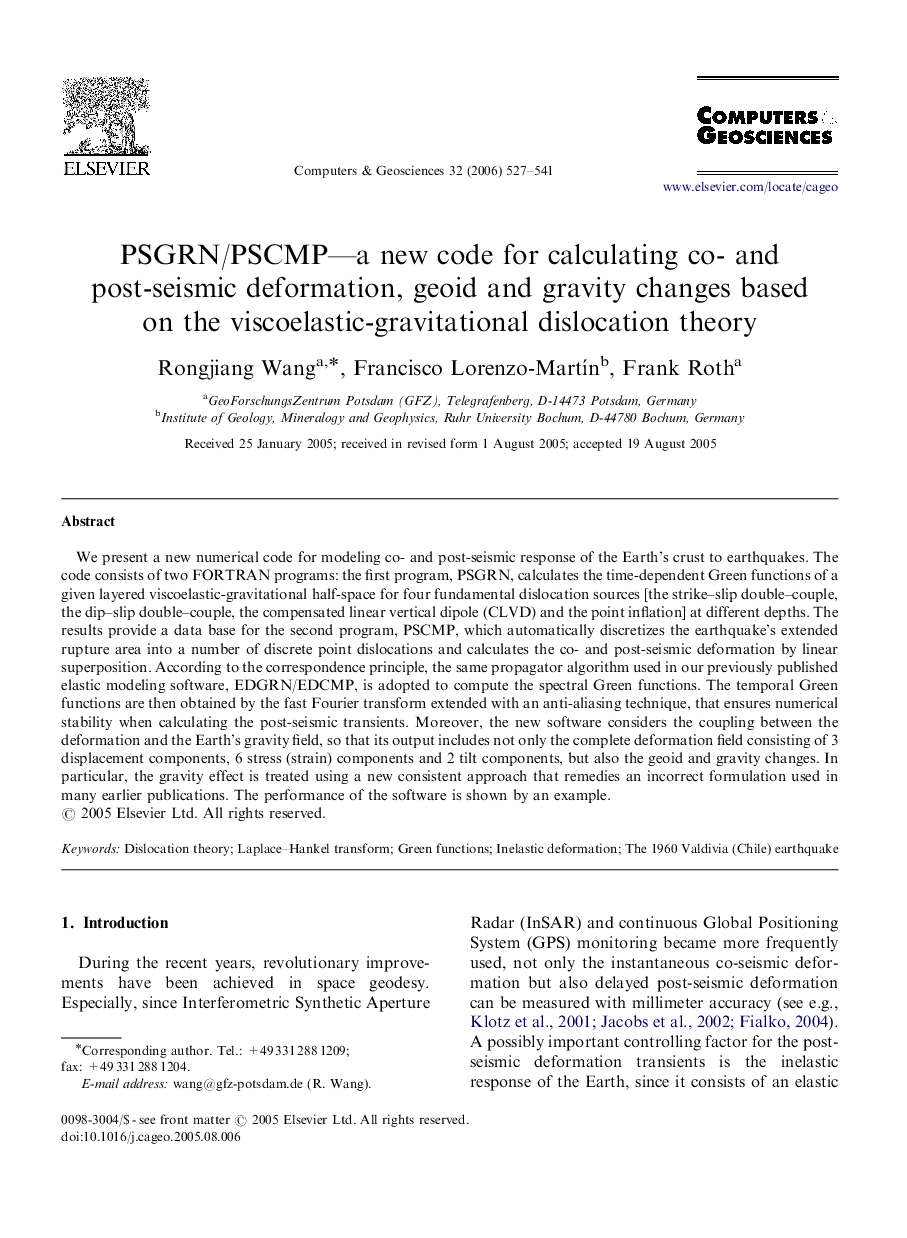| Article ID | Journal | Published Year | Pages | File Type |
|---|---|---|---|---|
| 508551 | Computers & Geosciences | 2006 | 15 Pages |
We present a new numerical code for modeling co- and post-seismic response of the Earth's crust to earthquakes. The code consists of two FORTRAN programs: the first program, PSGRN, calculates the time-dependent Green functions of a given layered viscoelastic-gravitational half-space for four fundamental dislocation sources [the strike–slip double–couple, the dip–slip double–couple, the compensated linear vertical dipole (CLVD) and the point inflation] at different depths. The results provide a data base for the second program, PSCMP, which automatically discretizes the earthquake's extended rupture area into a number of discrete point dislocations and calculates the co- and post-seismic deformation by linear superposition. According to the correspondence principle, the same propagator algorithm used in our previously published elastic modeling software, EDGRN/EDCMP, is adopted to compute the spectral Green functions. The temporal Green functions are then obtained by the fast Fourier transform extended with an anti-aliasing technique, that ensures numerical stability when calculating the post-seismic transients. Moreover, the new software considers the coupling between the deformation and the Earth's gravity field, so that its output includes not only the complete deformation field consisting of 3 displacement components, 6 stress (strain) components and 2 tilt components, but also the geoid and gravity changes. In particular, the gravity effect is treated using a new consistent approach that remedies an incorrect formulation used in many earlier publications. The performance of the software is shown by an example.
